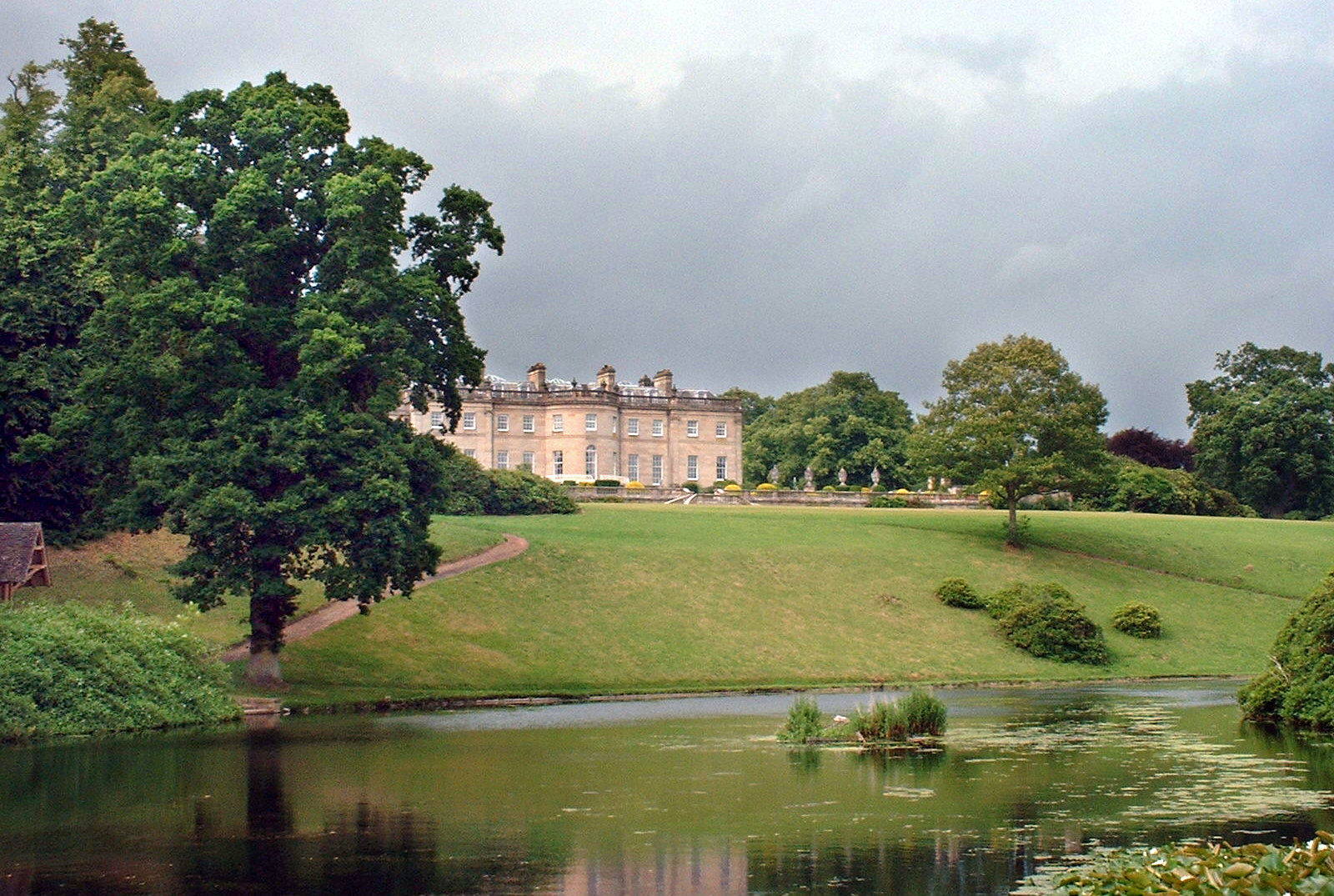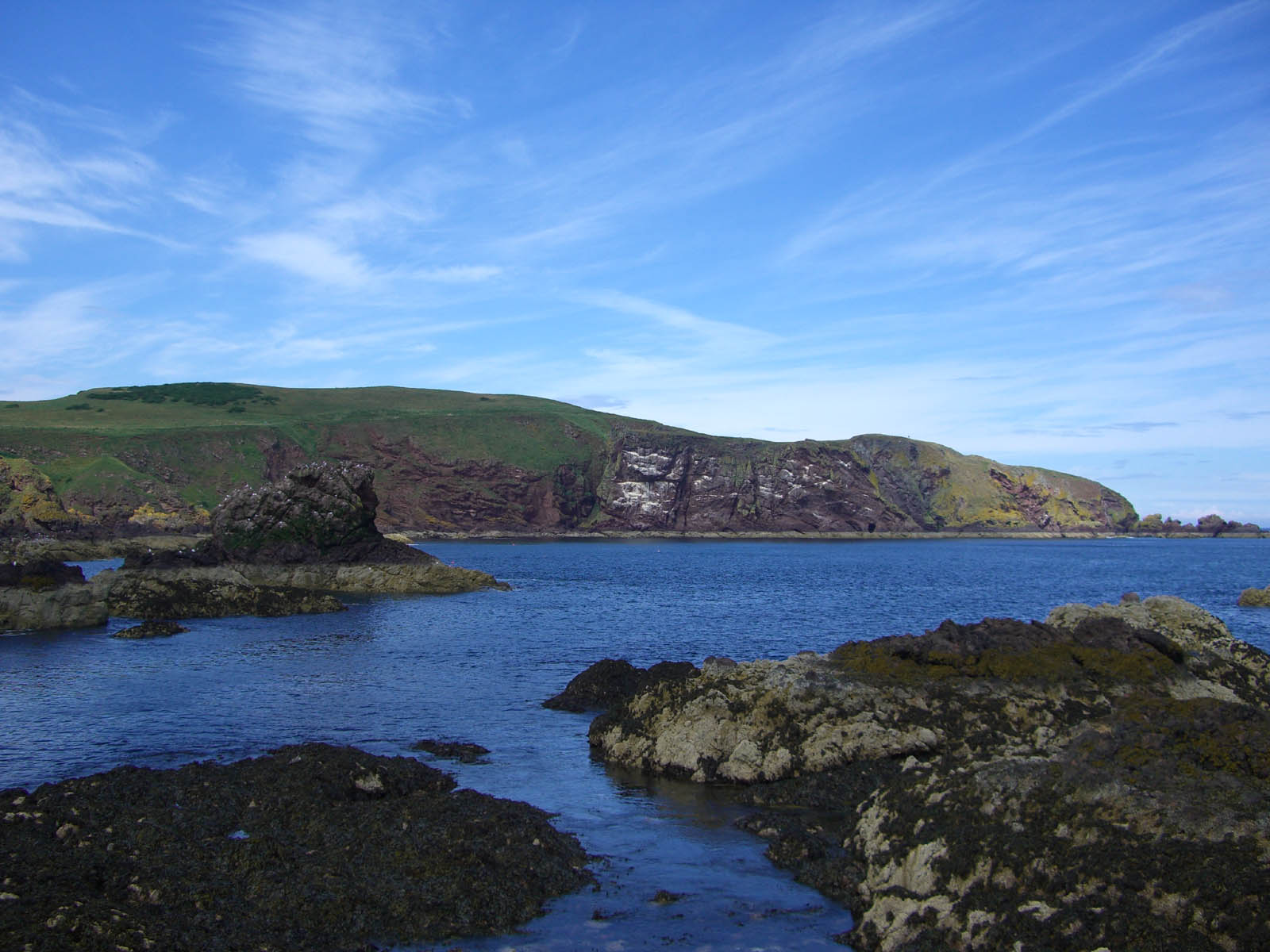|
Baron Palmer
Baron Palmer, of Reading in the County of Berkshire, is a title in the Peerage of the United Kingdom. It was created in 1933 for the businessman and patron of music, Sir Ernest Palmer, 1st Baronet. He had already been created a baronet, of Grosvenor Crescent in the City of Westminster, in the Baronetage of the United Kingdom on 26 January 1916. The Palmer family had made its fortune from their ownership of the firm of Huntley & Palmers, biscuit manufacturers, of Reading. the titles are held by the first Baron's great-grandson, the fourth Baron, who succeeded his uncle in 1990. He is the son of the Hon. Sir Gordon Palmer, Lord Lieutenant of Berkshire from 1978 to 1989, younger son of the second Baron. Lord Palmer is one of the ninety elected hereditary peers that remain in the House of Lords after the passing of the House of Lords Act 1999, and sits as a cross-bencher. The family seat is Manderston, near Duns, Berwickshire. Barons Palmer (1933) * (Samuel) Ernest Palmer, 1st Bar ... [...More Info...] [...Related Items...] OR: [Wikipedia] [Google] [Baidu] |
Reading, Berkshire
Reading ( ) is a town and borough in Berkshire, Southeast England, southeast England. Located in the Thames Valley at the confluence of the rivers River Thames, Thames and River Kennet, Kennet, the Great Western Main Line railway and the M4 motorway serve the town. Reading is east of Swindon, south of Oxford, west of London and north of Basingstoke. Reading is a major commercial centre, especially for information technology and insurance. It is also a regional retail centre, serving a large area of the Thames Valley with its shopping centre, the The Oracle, Reading, Oracle. It is home to the University of Reading. Every year it hosts the Reading and Leeds Festivals, Reading Festival, one of England's biggest music festivals. Reading has a professional association football team, Reading F.C., and participates in many other sports. Reading dates from the 8th century. It was an important trading and ecclesiastical centre in the Middle Ages, the site of Reading Abbey, one of th ... [...More Info...] [...Related Items...] OR: [Wikipedia] [Google] [Baidu] |
Manderston
Manderston House, Duns, Berwickshire, Scotland, is the home of The Rt Hon. The 4th Baron Palmer. It was completely rebuilt between 1901 and 1903 and has sumptuous interiors with a silver-plated staircase. The proprietor, Sir James Miller, 2nd Baronet (1864–1906), told the architect, John Kinross, that there was no budget: "It doesn't matter". The house is a Category A listed building and the surrounding area, which includes the farm complex at Buxley, is listed in the Inventory of Gardens and Designed Landscapes in Scotland. Origins Manderston was an estate of the powerful Hume family, and their tower house appears on General Roy's map of 1750. Alexander Hume, of Manderston, ''de jure'' 5th Earl of Dunbar (1651–1720), seems to be the last member of this family who owned the estate. On 14 October 1689, King William III & II confirmed the Earldom of Dunbar to him, exemplifying the previous confirmation thereof by King Charles II. The estate was later owned for a short ... [...More Info...] [...Related Items...] OR: [Wikipedia] [Google] [Baidu] |
Coronet Of A British Baron
A coronet is a small crown consisting of ornaments fixed on a metal ring. A coronet differs from other kinds of crowns in that a coronet never has arches, and from a tiara in that a coronet completely encircles the head, while a tiara does not. In other languages, this distinction is not made as usually the same word for ''crown'' is used irrespective of rank (german: Krone, nl, Kroon, sv, Krona, french: Couronne, etc.) Today, its main use is not as a headgear (indeed, many people entitled to a coronet never have a physical one created), but as a rank symbol in heraldry, adorning a coat of arms. Etymology The word stems from the Old French ''coronete'', a diminutive of ''co(u)ronne'' ('crown'), itself from the Latin ''corona'' (also 'wreath') and from the Ancient Greek ''κορώνη'' (''korōnē''; 'garland' or 'wreath'). Traditionally, such headgear is used by nobles and by princes and princesses in their coats of arms, rather than by monarchs, for whom the word ... [...More Info...] [...Related Items...] OR: [Wikipedia] [Google] [Baidu] |
Heir Apparent
An heir apparent, often shortened to heir, is a person who is first in an order of succession and cannot be displaced from inheriting by the birth of another person; a person who is first in the order of succession but can be displaced by the birth of a more eligible heir is known as heir presumptive. Today these terms most commonly describe heirs to hereditary titles (e.g. titles of nobility) or offices, especially when only inheritable by a single person. Most monarchies refer to the heir apparent of their thrones with the descriptive term of ''crown prince'' or ''crown princess'', but they may also be accorded with a more specific substantive title: such as Prince of Orange in the Netherlands, Duke of Brabant in Belgium, Prince of Asturias in Spain (also granted to heirs presumptive), or the Prince of Wales in the United Kingdom; former titles include Dauphin in the Kingdom of France, and Tsesarevich in Imperial Russia. The term is also used metaphorically to indicate a ... [...More Info...] [...Related Items...] OR: [Wikipedia] [Google] [Baidu] |
Adrian Palmer, 4th Baron Palmer
Adrian Bailie Nottage Palmer, 4th Baron Palmer (born 8 October 1951) is an aristocrat and landowner in Scotland. Lord Palmer succeeded his uncle in the peerage in 1990, and is now one of the ninety hereditary peers elected to remain in the House of Lords after the passing of the House of Lords Act 1999; he sits as a crossbencher. Early life Palmer is the son of Colonel the Hon. Sir Gordon Palmer, a younger son of Ernest Palmer, 2nd Baron Palmer by his marriage to Lorna Eveline Hope Bailie. He was educated at Eton and then at the University of Edinburgh, where he received a Certificate in Farming Practice in 1979. Career Palmer was an apprentice at his family's famous biscuit factory, Huntley and Palmers Ltd, in Reading, and then worked as sales manager in Belgium and Luxembourg, between 1974 and 1977. From 1977 to 1986 he was the Scottish representative to the European Landowners' Organisation (ELO). He was member of the Executive Council of the Historic Houses Associati ... [...More Info...] [...Related Items...] OR: [Wikipedia] [Google] [Baidu] |
Raymond Cecil Palmer, 3rd Baron Palmer
Raymond is a male given name. It was borrowed into English from French (older French spellings were Reimund and Raimund, whereas the modern English and French spellings are identical). It originated as the Germanic ᚱᚨᚷᛁᚾᛗᚢᚾᛞ (''Raginmund'') or ᚱᛖᚷᛁᚾᛗᚢᚾᛞ (''Reginmund''). ''Ragin'' (Gothic) and ''regin'' ( Old German) meant "counsel". The Old High German ''mund'' originally meant "hand", but came to mean "protection". This etymology suggests that the name originated in the Early Middle Ages, possibly from Latin. Alternatively, the name can also be derived from Germanic Hraidmund, the first element being ''Hraid'', possibly meaning "fame" (compare ''Hrod'', found in names such as Robert, Roderick, Rudolph, Roland, Rodney and Roger) and ''mund'' meaning "protector". Despite the German and French origins of the English name, some of its early uses in English documents appear in Latinized form. As a surname, its first recorded appearance in Br ... [...More Info...] [...Related Items...] OR: [Wikipedia] [Google] [Baidu] |
Berwickshire
Berwickshire ( gd, Siorrachd Bhearaig) is a historic county, registration county and lieutenancy area in south-eastern Scotland, on the English border. Berwickshire County Council existed from 1890 until 1975, when the area became part of the Borders region, with most of the historic county becoming part of the lower-tier Berwickshire district. Berwickshire district was abolished in 1996, when all the districts in the Borders region merged to become the Scottish Borders council area. The county takes its name from Berwick-upon-Tweed, its original county town, which was part of Scotland at the time of the county's formation in the twelfth century, but became part of England in 1482 after several centuries of swapping back and forth between the two kingdoms. After the loss of Berwick, Duns and Greenlaw both served as county town at different periods. The low-lying part of Berwickshire between the Tweed and the Lammermuirs is known as "the Merse", from an old Scots word for a ... [...More Info...] [...Related Items...] OR: [Wikipedia] [Google] [Baidu] |
Duns, Scottish Borders
Duns is a town in the Scottish Borders, Scotland. It was the county town of the Shires of Scotland, historic county of Berwickshire. History Early history Duns Law, the original site of the town of Duns, has the remains of an Iron Age hillfort at its summit. Similar structures nearby, such as the structure at Edin's Hall Broch, suggest the area's domestic and defensive use at a very early stage. Middle ages The first written mention of Duns is prior to 1179, when a 'Hugo de Duns' witnessed a charter of Roger d'Eu, of a grant of the benefice of the church of Gavinton, Berwickshire, Langton to Kelso Abbey. The town is further mentioned when a 'Robert of Douns' signed the Ragman Roll in 1296. The early settlement was sited on the slopes of Duns Law, close to the original Duns Castle built in 1320 by the Thomas Randolph, 1st Earl of Moray, Earl of Moray, nephew of Robert the Bruce. The town was frequently attacked by the English in border raids and as they headed north to the Loth ... [...More Info...] [...Related Items...] OR: [Wikipedia] [Google] [Baidu] |
House Of Lords Act 1999
The House of Lords Act 1999 (c. 34) is an Act of the Parliament of the United Kingdom that reformed the House of Lords, one of the chambers of Parliament. The Act was given Royal Assent on 11 November 1999. For centuries, the House of Lords had included several hundred members who inherited their seats (hereditary peers); the Act removed such a right. However, as part of a compromise, the Act did permit ninety-two hereditary peers to remain in the House on an interim basis. Another ten were created life peers to enable them to remain in the House. The Act decreased the membership of the House from 1,330 in October 1999 to 669 in March 2000. As another result of the Act, the majority of the Lords were now life peers, whose numbers had been gradually increasing since the Life Peerages Act 1958. As of November 2019, there were 793 members of the House of Lords, of whom 26 were senior Church of England bishops, whose representation in the House is governed by the Bishoprics Ac ... [...More Info...] [...Related Items...] OR: [Wikipedia] [Google] [Baidu] |
County Of Berkshire
Berkshire ( ; in the 17th century sometimes spelt phonetically as Barkeshire; abbreviated Berks.) is a historic county in South East England. One of the home counties, Berkshire was recognised by Queen Elizabeth II as the Royal County of Berkshire in 1957 because of the presence of Windsor Castle, and letters patent were issued in 1974. Berkshire is a county of historic origin, a ceremonial county and a non-metropolitan county without a county council. The county town is Reading. The River Thames formed the historic northern boundary, from Buscot in the west to Old Windsor in the east. The historic county, therefore, includes territory that is now administered by the Vale of White Horse and parts of South Oxfordshire in Oxfordshire, but excludes Caversham, Slough and five less populous settlements in the east of the Royal Borough of Windsor and Maidenhead. All the changes mentioned, apart from the change to Caversham, took place in 1974. The towns of Abingdon, Didcot, ... [...More Info...] [...Related Items...] OR: [Wikipedia] [Google] [Baidu] |







